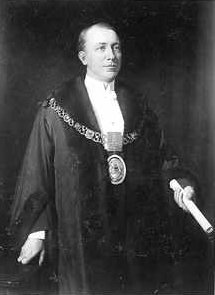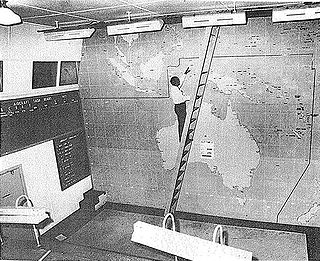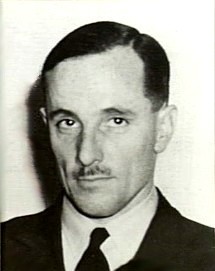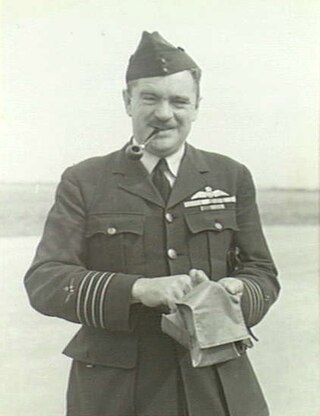Related Research Articles

Sir John Lavington Bonython was a prominent public figure in Adelaide, known for his work in journalism, business and politics. In association with his father, he became involved in the management of newspapers including The Advertiser; he also served as editor of The Saturday Express and as a journalist. After The Advertiser was sold in 1929 and converted to a public company, he became a director, and for a time vice-chairman; an association that continued until his death. In 1901 he began a long association with the Adelaide City Council, serving as Mayor of Adelaide (1911–1913) and later as Lord Mayor of Adelaide (1927–1930). He was knighted in 1935. The now removed Lavington Bonython Fountain on North Terrace was erected in front of the SA Museum in his honour.
Elizabeth Ann Dewar Churcher was an Australian arts administrator, best known as director of the National Gallery of Australia from 1990 to 1997. She was also a painter in her own right earlier in her life.

Air Vice Marshal William Dowling Bostock, was a senior commander in the Royal Australian Air Force (RAAF). During World War II he led RAAF Command, the Air Force's main operational formation, with responsibility for the defence of Australia and air offensives against Japanese targets in the South West Pacific Area. His achievements in the role earned him the Distinguished Service Order and the American Medal of Freedom. General Douglas MacArthur described him as "one of the world's most successful airmen".

Bankstown Bunker, formerly known as Air Defence Headquarters Sydney, is a heritage-listed defunct Royal Australian Air Force (RAAF) operations facility, located on the corner of Marion and Edgar Street, in Condell Park, New South Wales, Australia. It was designed by the Allied Works Council and built from 1943 to 1944 by Stuart Bros Pty Ltd of Sydney. It is also known as Air Defence Headquarters Ruin Sydney (former), No. 1 Fighter Section Headquarters, 1FSHQ, Bankstown Bunker and RAAF No. 1 Installation Bankstown; No. 101 Fighter Sector. It was added to the New South Wales State Heritage Register on 18 November 2011.

No. 208 Radar Station RAAF is a heritage-listed former Royal Australian Air Force (RAAF) radar station at Mine Camp at Catherine Hill Bay and Pinny Beach, both in City of Lake Macquarie, New South Wales, Australia. It was established on 10 February 1943. The remains of the radar station were added to the New South Wales State Heritage Register on 22 July 2008.

Clare Grant Stevenson, AM, MBE was the inaugural Director of the Women's Auxiliary Australian Air Force (WAAAF), from May 1941 to March 1946. As such, she was described in 2001 as "the most significant woman in the history of the Air Force". Formed as a branch of the Royal Australian Air Force (RAAF) in March 1941, the WAAAF was the first and largest uniformed women's service in Australia during World War II, numbering more than 18,000 members by late 1944 and making up over thirty per cent of RAAF ground staff.

Air Vice-Marshal Joseph Eric Hewitt, was a senior commander in the Royal Australian Air Force (RAAF). A Royal Australian Navy officer who transferred permanently to the Air Force in 1928, he commanded No. 101 Flight in the early 1930s, and No. 104 (Bomber) Squadron RAF on exchange in Britain shortly before World War II. Hewitt was appointed the RAAF's Assistant Chief of the Air Staff in 1941. The following year he was posted to Allied Air Forces Headquarters, South West Pacific Area, as Director of Intelligence. In 1943, he took command of No. 9 Operational Group, the RAAF's main mobile strike force, but was controversially sacked by the Chief of the Air Staff, Air Vice Marshal George Jones, less than a year later over alleged morale and disciplinary issues.

Air Commodore Francis William Fellowes (Frank) Lukis, CBE was a senior commander in the Royal Australian Air Force (RAAF). A veteran of World War I, he first saw combat as a soldier in the Australian Imperial Force at Gallipoli. In 1917, Lukis transferred to the Australian Flying Corps and flew with No. 1 Squadron in the Middle East, where he was twice mentioned in despatches. A member of the Australian Air Corps following the war, he transferred to the fledgling RAAF in 1921, and became the first commanding officer of the newly re-formed No. 3 Squadron at RAAF Station Richmond, New South Wales, in 1925.

Air Vice Marshal Henry Neilson Wrigley, CBE, DFC, AFC was a senior commander in the Royal Australian Air Force (RAAF). A pioneering flyer and aviation scholar, he piloted the first trans-Australia flight from Melbourne to Darwin in 1919, and afterwards laid the groundwork for the RAAF's air power doctrine. During World War I, Wrigley joined the Australian Flying Corps and saw combat with No. 3 Squadron on the Western Front, earning the Distinguished Flying Cross; he later commanded the unit and published a history of its wartime exploits. He was awarded the Air Force Cross for his 1919 cross-country flight.

Air Vice Marshal Ellis Charles Wackett, CB, CBE was a senior commander in the Royal Australian Air Force (RAAF). Its chief engineer from 1935 to 1959, he served on the RAAF's controlling body, the Air Board, for a record seventeen years, and has been credited with infusing operations with new standards of airworthiness. Commencing his service career as a Royal Australian Navy cadet during World War I, Wackett transferred to the Air Force in 1923 while on an engineering course in Britain. He qualified as a pilot before completing his studies and returning to Australia, where he inaugurated parachute instruction within the RAAF and made the country's first freefall descent from a military aircraft in 1926. The following year, he led a three-month survey flight to Papua New Guinea.

Mary Teston Luis Bell was an Australian aviator and founding leader of the Women's Air Training Corps (WATC), a volunteer organisation that provided support to the Royal Australian Air Force (RAAF) during World War II. She later helped establish the Women's Auxiliary Australian Air Force (WAAAF), the country's first and largest women's wartime service, which grew to more than 18,000 members by 1944.

Eric Harrison was an Australian aviator who made the country's first military flight, and helped lay the foundations of the Royal Australian Air Force (RAAF).
Elizabeth Anne Webby was an Australian literary critic, editor and scholar of literature. Emeritus Professor Webby retired from the Chair of Australian Literature at the University of Sydney in 2007. She edited The Cambridge Companion to Australian Literature and was editor of Southerly from 1988 to 1999.

Florence Violet McKenzie, affectionately known as "Mrs Mac", was Australia's first female electrical engineer, founder of the Women's Emergency Signalling Corps (WESC) and lifelong promoter for technical education for women. She campaigned successfully to have some of her female trainees accepted into the all-male Navy, thereby originating the Women's Royal Australian Naval Service (WRANS). Some 12,000 servicemen passed through her signal instruction school in Sydney, acquiring skill in Morse code and visual signalling.
Alma De Groen is an Australian feminist playwright, born in New Zealand on 5 September 1941.

Grace Margaret Wilson was a high-ranked nurse in the Australian Army during World War I and the first years of World War II. Wilson was born in Brisbane, and completed her initial training as a nurse in 1908. After the outbreak of World War I she joined the Australian Army Nursing Service (AANS) and subsequently transferred to the First Australian Imperial Force. From 1915 until 1919 she was the principal matron of the 3rd Australian General Hospital. She served as the temporary matron-in-chief in the AIF Headquarters, London from late 1917 until early 1918. Wilson returned to Australia in 1920 and left the AIF to work in civilian hospitals. She was appointed the matron-in-chief of the AANS in 1925, and in September 1940 joined the Second Australian Imperial Force. She served in the Middle East until August 1941, when she returned to Australia due to ill health. She left the Army the next month, but from September 1943 worked in the Department of Manpower Directorate (Victoria)'s nursing control section.
Margaret Adams was an Australian aviator.

Colonel Barbara Edweina Audrey Starrett was an Australian military officer and instructor. She entered the service as a nurse and went on to attend officers' training. Serving as an instructor, she worked her way through the ranks becoming the chief instructor at the Women's Royal Australian Army Corps (WRAAC) School in Georges Heights. Between 1977 and 1979, she served as the fourth and last director of the WRAAC, having the distinction of being the first director who had not served during wartime.
Margaret Elizabeth Buchanan was a British pharmacist and pioneer of women in pharmacy.
George Alfred Russell was an Australian businessman involved in several business ventures, finally acting as Australian manager for the North British Insurance Company.
References
- ↑ HEYWOOD, ANNE. "Cameron, Elizabeth Katherine (Betty) (1918 - 2011)". The Australian Woman's Registry. Retrieved 23 November 2013.
- 1 2 3 4 5 6 7 Anne Heywood (12 June 2009). "Cameron, Elizabeth Katherine (Betty) (1918 - )". The Australian Women's Register. Retrieved 7 February 2010.
- ↑ Anne Heywood (18 February 2004). "Cameron, Elizabeth Katherine (Betty) (1918 - )". Australian Women Biographical entry. Archived from the original on 16 March 2005. Retrieved 7 February 2010.